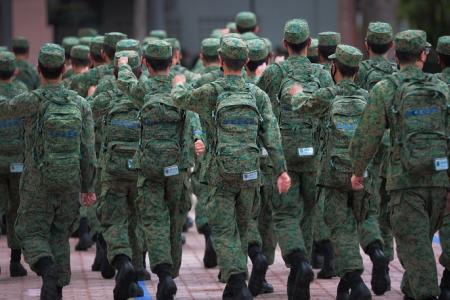SAF traffic accident rate and heat injuries down in 2023
The number of heat exhaustion injuries suffered by Singapore Armed Forces (SAF) servicemen has fallen from seven in 2021 to two in 2023, with no cases of heat stroke among those incidents.
The SAF’s vehicle accident rate has also fallen from 3.04 per 100,000km in the 2021 work year to 2.54 per 100,000 km in the 2023 work year, said Senior Minister of State for Defence Heng Chee How.
He did not provide the specific number of vehicle accidents. Mindef’s work year runs from April 1 to March 31 the following year.
Mr Heng provided the figures in Parliament on Oct 16, in response to Nominated MP Neil Parekh’s request for details of safety audits and review processes conducted by the SAF Inspector-General’s Office (IGO).
Heat injuries and vehicle accidents are specific areas that the SAF is paying attention to as it seeks to strengthen its safety culture, Mr Heng said.
“The SAF has raised awareness of units, commanders and servicemen on the importance of heat acclimatisation and early identification of heat injury symptoms”, he added.
Other measures the SAF has taken to reduce heat injuries include the installation of wet bulb globe temperature sensors in camps and training areas to provide real-time environmental heat measure for better work-rest cycle decisions.
The SAF has also partnered with the National University of Singapore and DSO National Laboratories to establish the Heat Resilience and Performance Centre to conduct research and development on soldier heat resilience and adaptation. There were seven cases of heat stroke in 2021. Heat stroke is an extreme form of heat injury where the core body temperature exceeds 40 deg C with symptoms that can include coma, seizure, and altered level of consciousness, confusion, or headache.
The condition can be fatal if it is not treated in time.
Mr Heng said the SAF has also been strengthening its training regime for its drivers, including qualifying them to drive smaller vehicles to gain experience and confidence, before they progressively operate larger and more complex vehicles.
It also uses driving circuits and leveraged on technology like driving simulators to increase training hours and expand the range of training scenarios, including challenging and contingency situations.
Technology is also deployed on the SAF’s vehicles, with vehicular proximity sensors and cameras having been adopted to reduce human judgment errors.
More recently, technologies like driver monitoring systems to detect driver fatigue, as well as sensors and video analytics to spot unsafe driving practices and safety transgressions have also been implemented.
Mr Heng said the SAF IGO conducts 40 to 50 physical audits and reviews of safety standards and practices involving SAF formations and units.
These inspections cover safety policies, management system and culture, day-to-day practices, compliance with training safety instructions and attention of commanders to safety outcomes.
The IGO also looks into notable safety incidents and near-misses to establish their root causes, to determine if there are safety lapses and recommend corrective actions where necessary.
Mr Heng noted that while there have been no significant systemic weaknesses identified, the IGO recognises that the journey to zero accidents is a continuous one that requires constant effort to improve the safety culture of all units.
Get The New Paper on your phone with the free TNP app. Download from the Apple App Store or Google Play Store now


